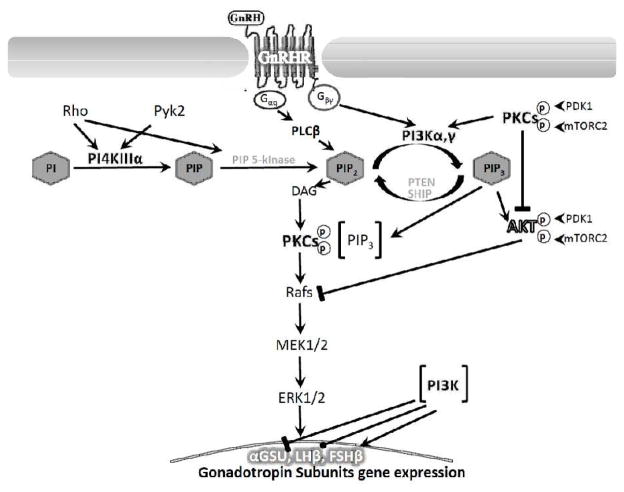Figure 9.
A proposed model for PI4K and PI3K-AKT involvement in GnRH to ERK1/2 signaling and gonadotropins gene expression in αT3-1 and LβT2 gonadotrope cells. Binding of GnRH to its receptor exert activation of Gαq-PLCβ-PKC to mediate ERK1/2 activation, which results in its translocation to the nucleus to phosphorylate transcription factors involved in gonadotropin subunits gene expression. PI4K, known to be activated by Rho and Pyk2 converts PI to PIP. PI3K, known to be activated by Gβγ converts PIP2 to PIP3. PIP3 translocates PDK1 and mTORC2 to the membrane. PLCβ, known to be activated by Gαq converts PIP2 to IP3 and DAG, which are involved in Ca2+ mobilization and PKC activation, respectively. PDK1 and mTORC2 phosphorylate PKC and AKT during their activation. Still PKC inhibits AKT activation. Reduction in AKT during GnRHR activation alleviates Raf inhibition by AKT, thus supporting ERK activation. PKC acts upstream and downstream to PI3K, while some PKC isoforms are activated by PIP3. PI3K inhibits GnRH-stimulated αGSU transcription, has no effect on LHβ and stimulates GnRH-activation of FSHβ transcription.

